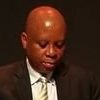9 Southeast Asia History Books That Shape Understanding
Recommended by Patrick Collison, Herman Mashaba, Samantha Power for profound regional insights





What if the stories of Southeast Asia's past could reshape how you understand the present? The region’s history is a tapestry of resilience, conflict, and transformation that too often escapes mainstream narratives. As tensions and opportunities rise anew, grasping this history matters more than ever.
Consider Patrick Collison, CEO of Stripe, who praises Lee Kuan Yew’s memoir for its candid leadership lessons shaping Singapore’s miracle. Meanwhile, Samantha Power, former US Ambassador to the UN, found The Hidden History of Burma indispensable for understanding Myanmar’s complex struggles. Herman Mashaba, Johannesburg’s former mayor, calls From Third World to First a must-read, emphasizing its broad relevance beyond Singapore.
These carefully curated books offer proven insights into Southeast Asia’s political, social, and cultural evolution. Yet, if you want a collection tailored precisely to your interests—whether it's military alliances, gender dynamics, or urban development—you might consider creating a personalized Southeast Asia History book that builds on these expert foundations.
Recommended by Patrick Collison
CEO of Stripe and Co-Founder of Arc Institute
“@jaimani I love that book...” (from X)
by Lee Kuan Yew··You?
by Lee Kuan Yew··You?
Lee Kuan Yew's decades as Singapore's founding prime minister shape this detailed recount of transforming a vulnerable, colonial-era city-state into a thriving global hub. Through candid reflections and unpublished government documents, you explore the challenges of nation-building, from overcoming communist threats to developing infrastructure and public housing. The book offers a revealing look at political strategy, economic planning, and leadership decisions that shaped modern Singapore. If you want insight into pragmatic governance and strategic statecraft in Southeast Asia, this book provides a grounded, firsthand perspective.
Recommended by John Dower
Pulitzer Prize-winning author
“Bound by War is a pathbreaking, intimate, panoramic, and impressively binational case study of America's emergence as a Pacific power with the conquest of the Philippines in 1898, and its evolution thereafter, through war and peace, into the gargantuan global military establishment we know today.”
by Christopher Capozzola··You?
by Christopher Capozzola··You?
When Christopher Capozzola, a history professor at MIT, explores the intricate ties between the United States and the Philippines, he goes beyond surface narratives to reveal how military service shaped a complex alliance over more than a century. You’ll discover how Filipino soldiers played pivotal roles from the colonial Philippine Scouts to modern conflicts and how their contributions influenced both societies politically and culturally. The book delves into specific episodes like the 1898 occupation and post-9/11 military engagements, offering you a nuanced view of America’s Pacific strategy and its human dimensions. If your interest lies in military history entwined with Southeast Asian geopolitics, this book offers a detailed, thoughtful examination that challenges simple interpretations.
This tailored book explores Southeast Asia's rich and complex history through a lens that matches your background and learning goals. It examines key events, cultural shifts, and political transformations that shaped the region, offering a thorough yet focused journey through its past. By concentrating on your specific interests—whether they include colonial legacies, regional conflicts, or cultural diversity—it reveals the intricate tapestry of Southeast Asia with clarity and depth. This personalized approach helps you absorb knowledge efficiently and meaningfully, making the vast historical landscape accessible and relevant to your unique perspective. You gain insight into the factors that continue to influence Southeast Asia’s present-day dynamics.
Recommended by Samantha Power
Former US Ambassador to the UN, Harvard Professor
“A gripping read, this @thantmyintu book offers powerful insights into Burma's history—and its future. Deserving of this rave from @nytimesbooks” (from X)
by Thant Myint-U··You?
Drawing from his extensive background as a historian and international public servant deeply involved in Burma's political reforms, Thant Myint-U unpacks the complex realities behind the country's tumultuous journey in the 21st century. You gain insight into the ethnic conflicts, the rise and fall of democratic hopes, and the economic forces shaping Burma, illuminated through exclusive interviews and the author's own peace process experiences. The book challenges simplified narratives, revealing the nuanced interplay of race, capitalism, and power that continues to define Burma today. This is a vital read if you're looking to understand the forces behind Burma’s ongoing crisis beyond headline summaries.
Recommended by Barbara Watson Andaya
University of Hawaii historian
“The great strength of Amazons of the Huk Rebellion derives from Lanzona’s interaction with the women who participated in the Huk movement and from the skill with which she has entwined their voices with chronological narrative and gender theory. This book not only casts new light on a significant period of Philippine history but also raises comparative questions for scholars working on revolution and social action elsewhere.”
by Vina A. Lanzona··You?
by Vina A. Lanzona··You?
Drawing from her role as a history professor at the University of Hawai’i–Manoa, Vina A. Lanzona investigates the vital yet often overlooked participation of women in the Huk rebellion, a pivotal peasant uprising in Philippine history. Through intimate interviews with over a hundred female veterans, she unpacks how these women balanced revolutionary duties—such as spying and commanding troops—with personal lives, including love and family. You'll gain a nuanced understanding of how gender and sexuality shaped both individual experiences and the broader revolutionary movement, making this book especially insightful for those exploring gender dynamics within Southeast Asian social conflicts. It’s a detailed look at revolution that goes beyond traditional military narratives to include the human complexities involved.
After years of exploring Indonesia's vibrant culture and complex history, Tim Hannigan crafted this richly illustrated travel guide that goes beyond typical tourist fare. You’ll gain detailed insights into Indonesia’s diverse regions, from the temples of Java to the untouched wilderness of Papua, supported by over 400 vivid photographs and nine maps. The book offers a nuanced look at Indonesia’s geography, culture, and wildlife, making it a strong companion for history enthusiasts and travelers alike. While it doesn’t delve deeply into political history, it provides a well-rounded perspective on the archipelago’s cultural tapestry that will enrich your understanding whether you’re planning a visit or simply curious about the region.
by TailoredRead AI·
This tailored book offers a personalized 90-day journey through the complex history of Southeast Asia, designed to align with your background and learning goals. It explores key events, cultural shifts, and political developments that have shaped the region, while focusing closely on the topics that interest you most. By synthesizing expert knowledge into a clear, structured pathway, the book reveals the intricate connections within Southeast Asia's past. This customized approach ensures that you engage deeply with the material, gaining insights that match your specific goals and learning style. Whether your focus is on regional conflicts, nation-building, or social transformations, this book provides a tailored guide to mastering Southeast Asia's history efficiently and meaningfully.
by Max Hastings··You?
by Max Hastings··You?
Drawing from extensive interviews and exhaustive research into American and Vietnamese archives, Max Hastings offers a vivid portrayal of the Vietnam War that captures both the sweeping military campaigns and the intimate human experiences involved. You gain insight into pivotal battles like Dienbienphu and the 1968 Tet Offensive, alongside lesser-known but brutal episodes such as the Daido massacre. Hastings challenges the common narrative by emphasizing the immense suffering of the Vietnamese people, illustrating the costs borne by all sides without romanticizing or demonizing any faction. This book suits anyone seeking a deep, balanced understanding of the war's complexities, beyond typical Western perspectives.
by Luis H. Francia··You?
by Luis H. Francia··You?
Luis H. Francia’s decades of experience as a Filipino-American writer and educator shape this nuanced recounting of Philippine history, from ancient Malay roots through colonial upheavals to modern insurgencies. You’ll gain insight into how centuries of Spanish and American influences intertwined with indigenous cultures to form today’s multicultural Filipino identity. Chapters explore specific events like the 1899 Philippine-American War and post-independence challenges, revealing the complexities often overlooked in mainstream narratives. This book suits those looking to understand the layered colonial and post-colonial forces that molded the Philippines beyond simple historical timelines.
by Ray Canoy··You?
by Ray Canoy··You?
Unlike most Southeast Asia history books that prioritize broad regional narratives, this work by Ray Canoy zeroes in on the Philippines with a detailed, illustrated journey from prehistory through contemporary times. You learn not only the colonial impacts under Spain and the United States but also gain insights into the Marcos dictatorship and the nation's evolving republics. Canoy’s academic background enriches the text with a nuanced understanding, especially evident in chapters covering the 20th century political shifts. This book suits you if you want a focused, visually engaging exploration of Philippine history grounded in scholarly research without overwhelming regional generalities.
Recommended by Patrick Collison
CEO of Stripe and Co-Founder of Arc Institute
“@jaimani I love that book...” (from X)
by Nicholas Walton·You?
by Nicholas Walton·You?
Nicholas Walton challenges the common perception that Singapore's success story is simply about rapid economic growth, instead revealing a nuanced portrait of a nation now grappling with complacency amid its achievements. Drawing from a unique experience of walking across the entire island in a single day, Walton connects historical milestones—from colonial roots to independence—with contemporary issues like authoritarian governance and demographic challenges. You gain insights into how Singapore’s past shapes its present, including detailed reflections on its social stability and education system. This book suits anyone interested in understanding not just Singapore’s rise but the complexities threatening its future resilience.
Get Your Personal Southeast Asia History Guide ✨
Stop sorting through countless books. Receive strategies tailored to your interests and goals.
Trusted by Southeast Asia History enthusiasts and experts worldwide
Conclusion
The nine books presented weave together several key themes: the intricate dance of colonialism and independence, the roles of leadership and governance in shaping nations, and the nuanced experiences of peoples from Burma to the Philippines. Each offers a distinct lens—whether it's Max Hastings’ balanced recount of Vietnam’s war or Vina Lanzona’s groundbreaking focus on women in revolution.
If you’re navigating the region’s complex history for academic purposes, start with Bound by War and The Hidden History of Burma. For deeper cultural immersion and political reflections, combine Journey Through Indonesia with Singapore, Singapura. For a more personalized approach tailored to your unique questions, you can create a personalized Southeast Asia History book that bridges these broader narratives with your specific needs.
These books aren’t just history—they’re tools to accelerate your understanding of a region that continues to shape global affairs. Dive in, and let their insights guide you through Southeast Asia’s past and present.
Frequently Asked Questions
I'm overwhelmed by choice – which book should I start with?
Start with From Third World to First for a broad view of Singapore’s transformation. It offers leadership lessons applicable across Southeast Asia and is highly praised by Patrick Collison and Herman Mashaba.
Are these books too advanced for someone new to Southeast Asia History?
No, many books like Journey Through Indonesia provide accessible cultural context, while others balance detailed history with engaging narratives, making them suitable for beginners.
What’s the best order to read these books?
Begin with regional overviews like From Third World to First and History of the Philippines, then explore focused topics such as Amazons of the Huk Rebellion or Bound by War for deeper insights.
Do I really need to read all of these, or can I just pick one?
You can pick one based on your interest—whether leadership, war, or culture. However, the collection together offers a richer, multidimensional understanding of Southeast Asia’s history.
Are any of these books outdated given how fast Southeast Asia History changes?
These books cover foundational events and themes that remain relevant. For ongoing developments, pairing them with current analyses or personalized content can keep your knowledge fresh.
How can I get tailored insights without reading multiple full books?
While these expert-recommended books provide valuable frameworks, you can also create a personalized Southeast Asia History book that distills key knowledge aligned to your interests and goals for efficient learning.
📚 Love this book list?
Help fellow book lovers discover great books, share this curated list with others!
Related Articles You May Like
Explore more curated book recommendations








